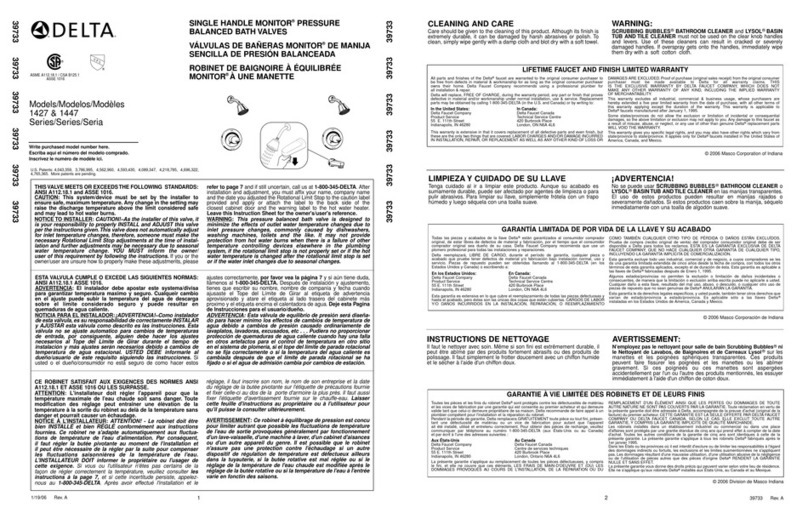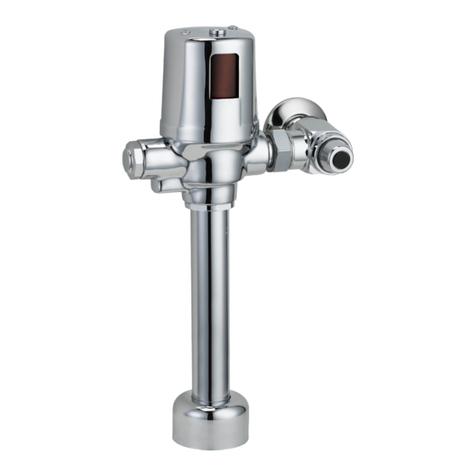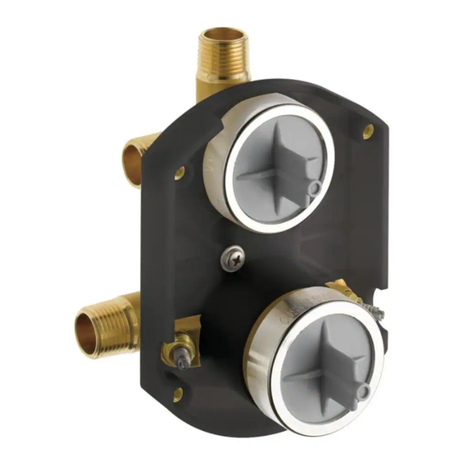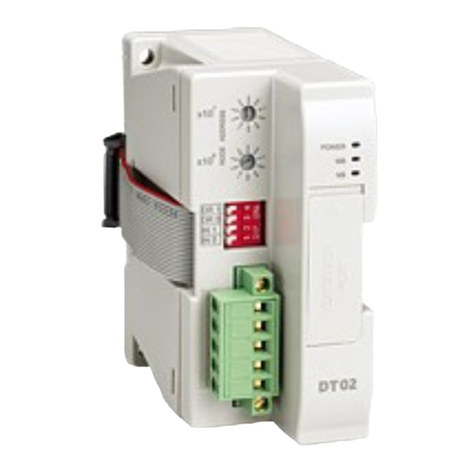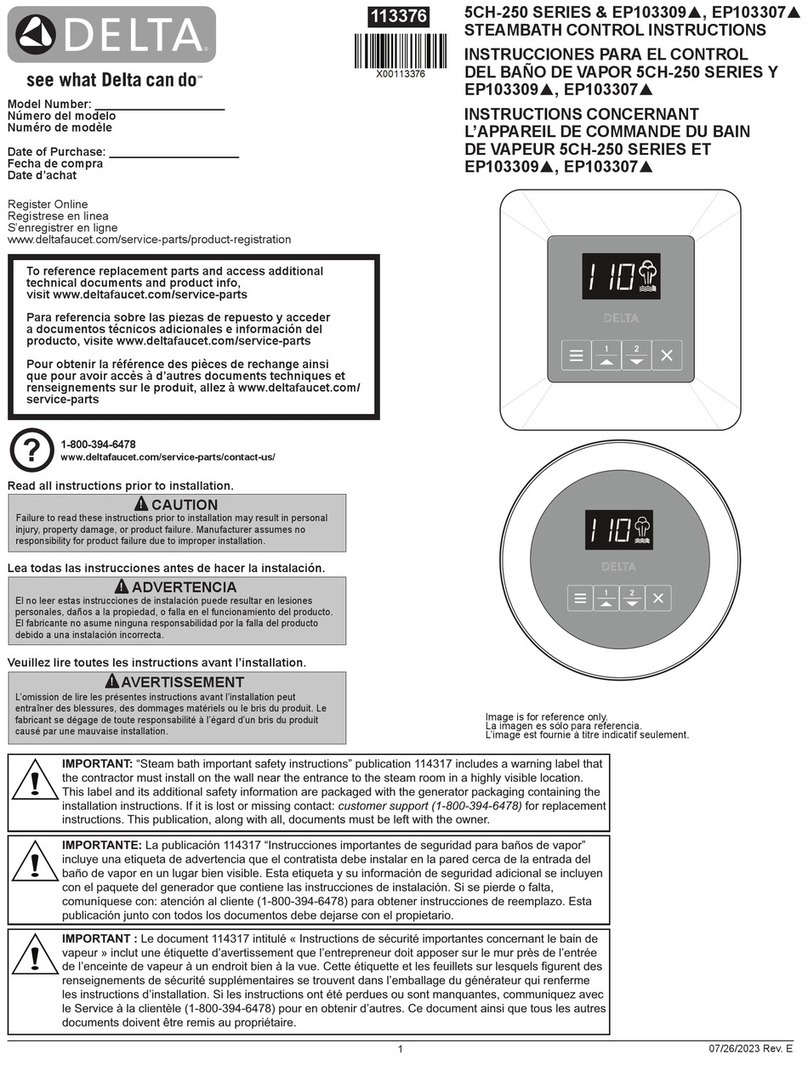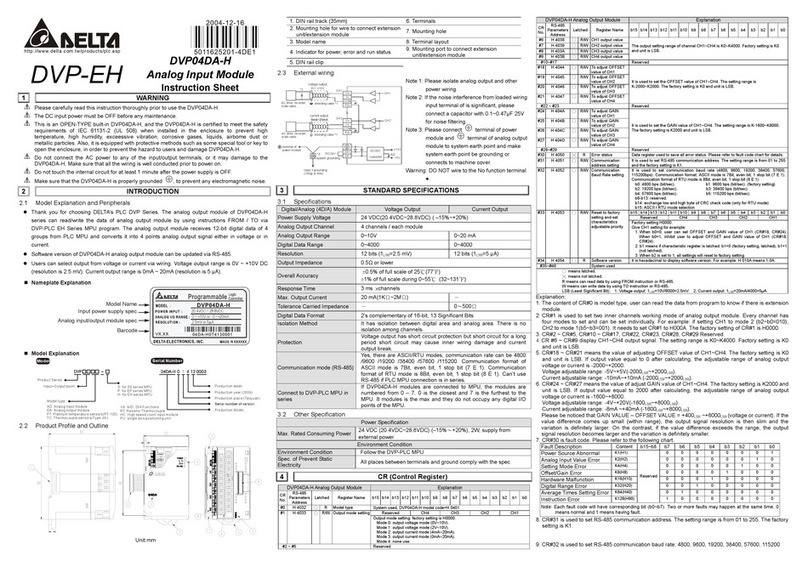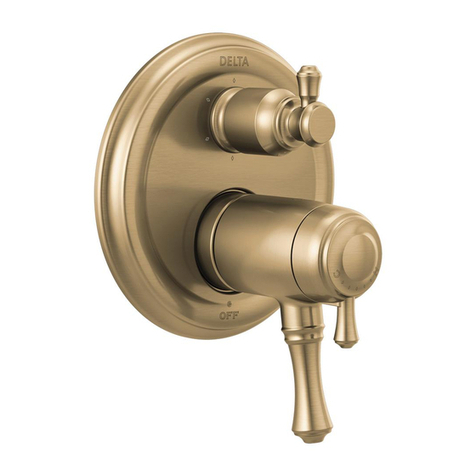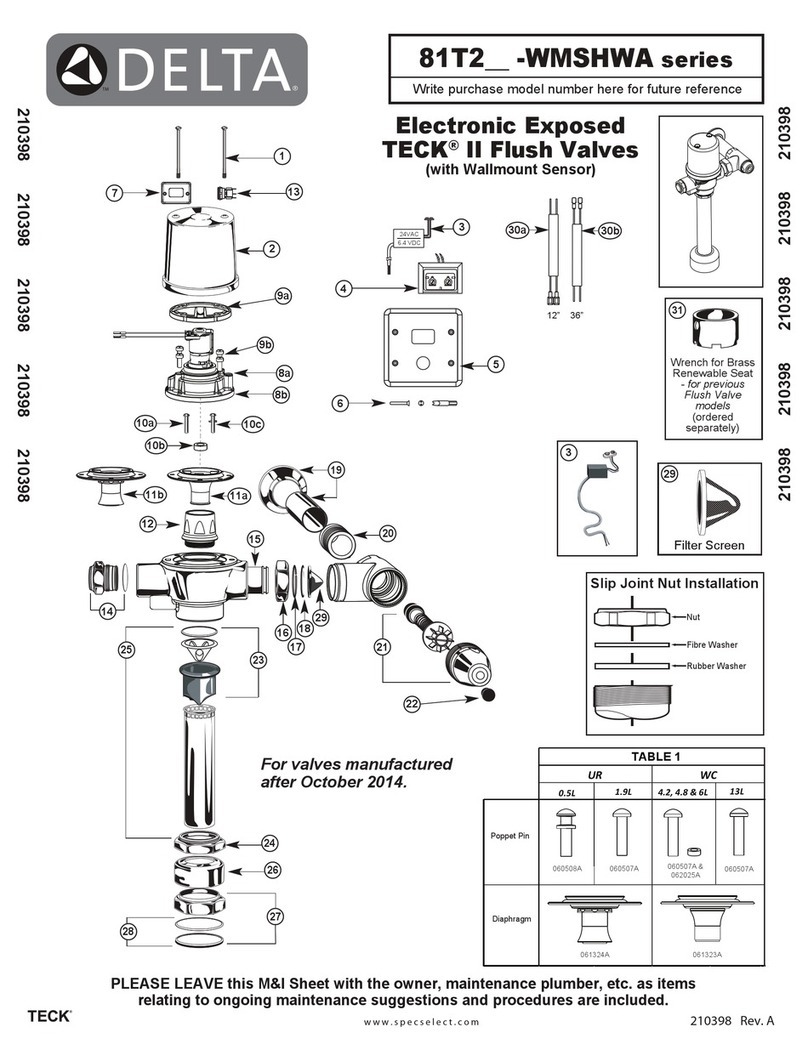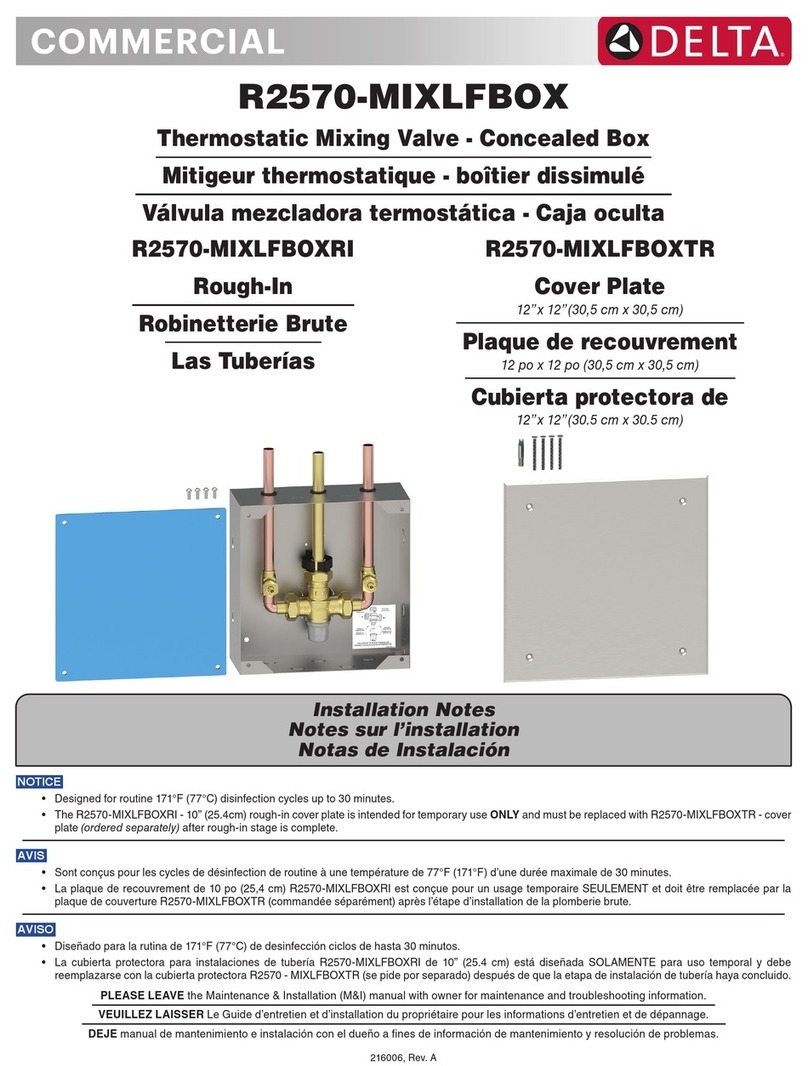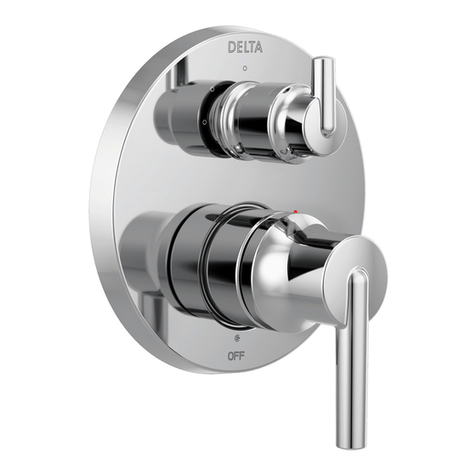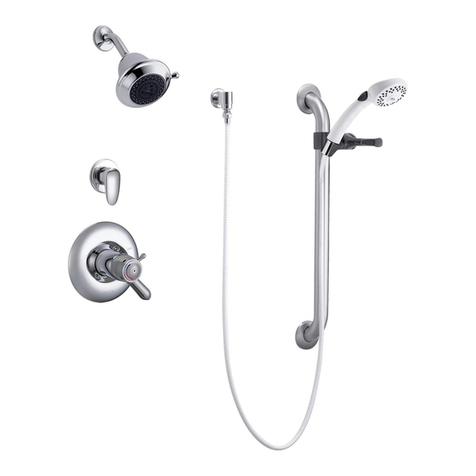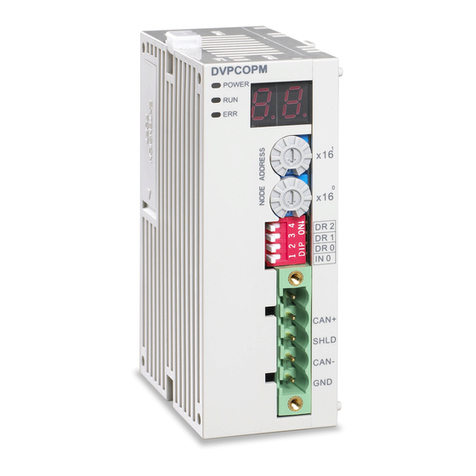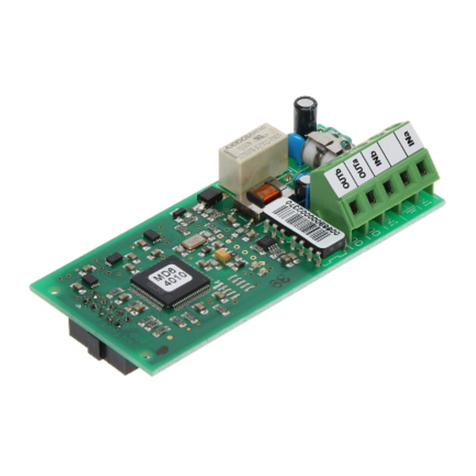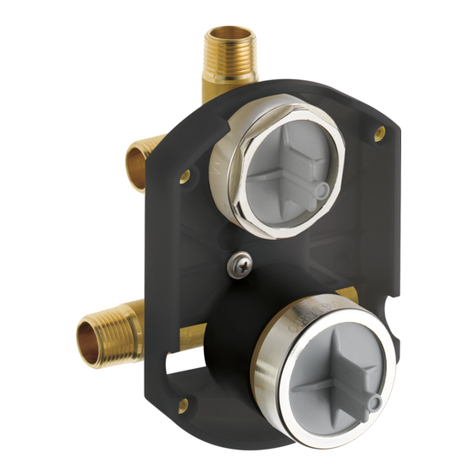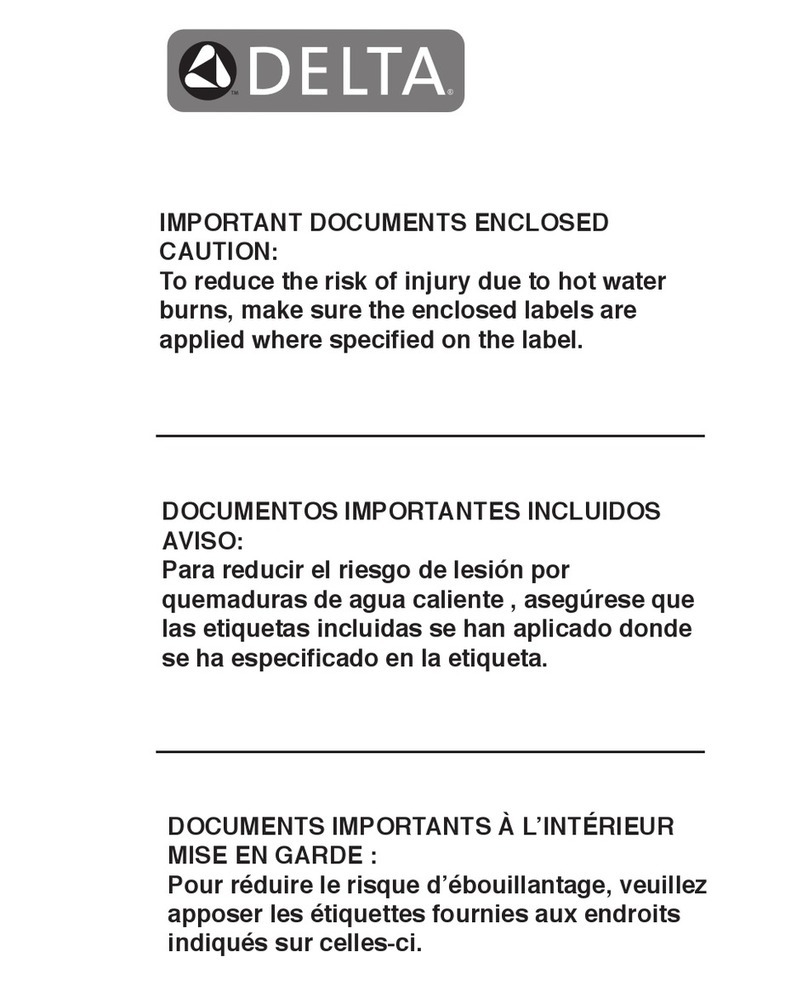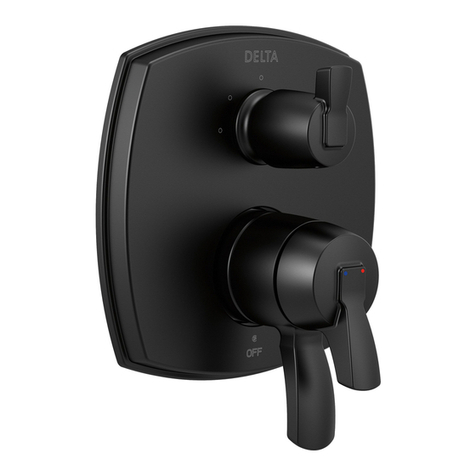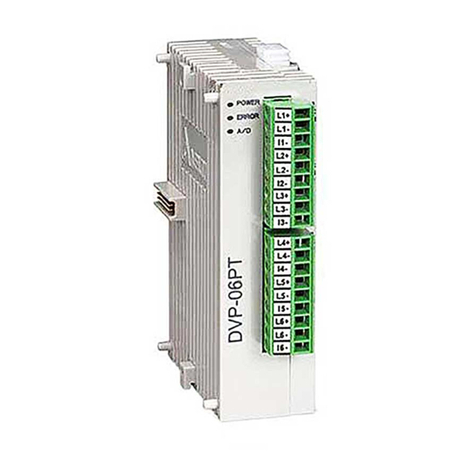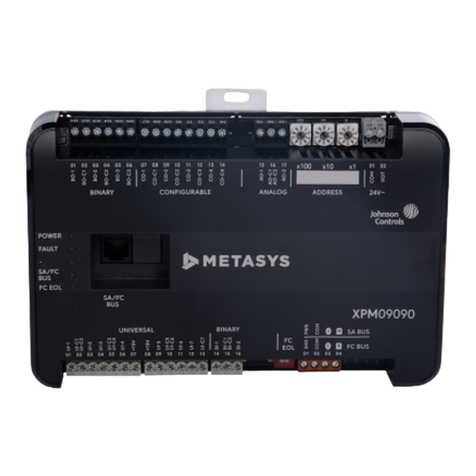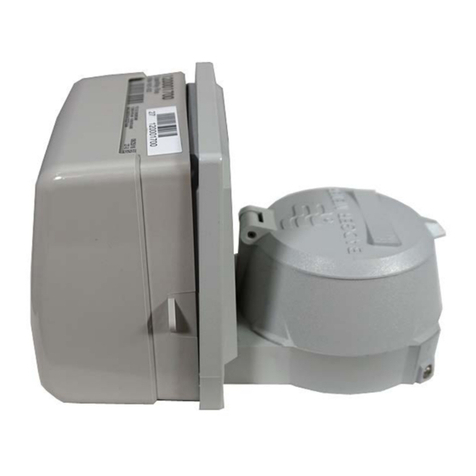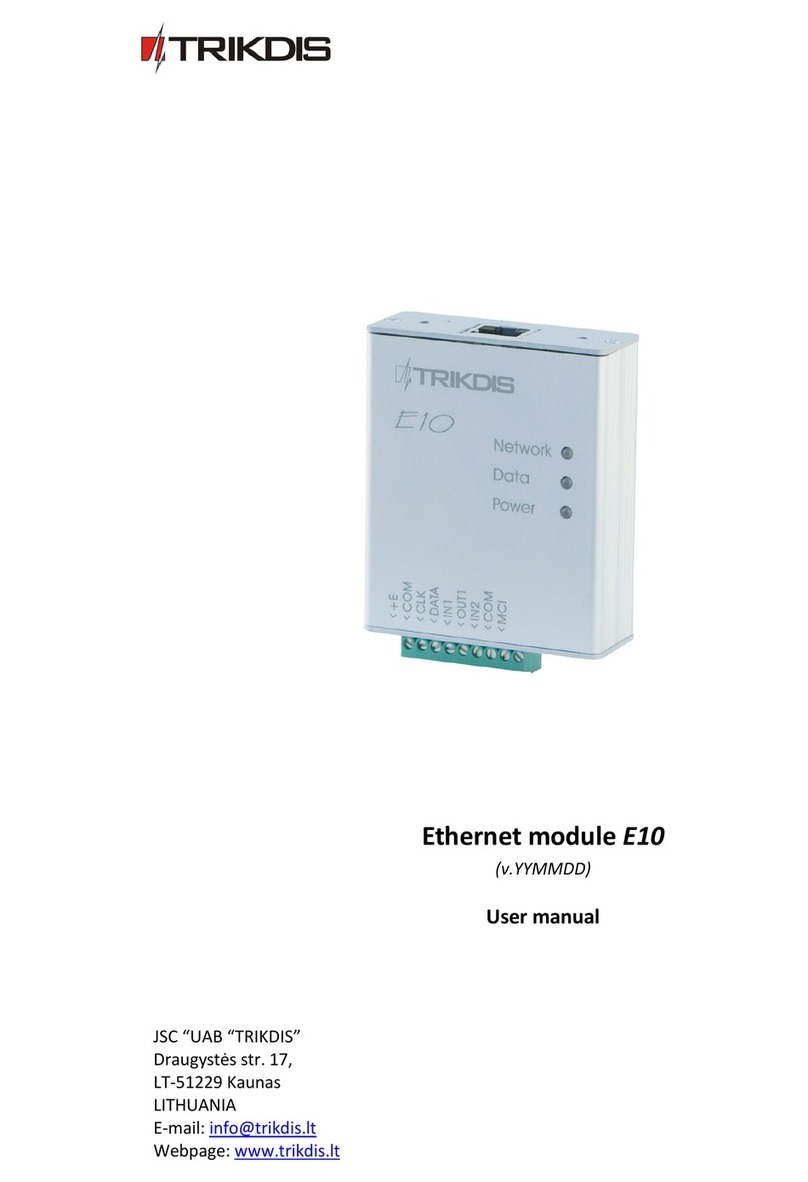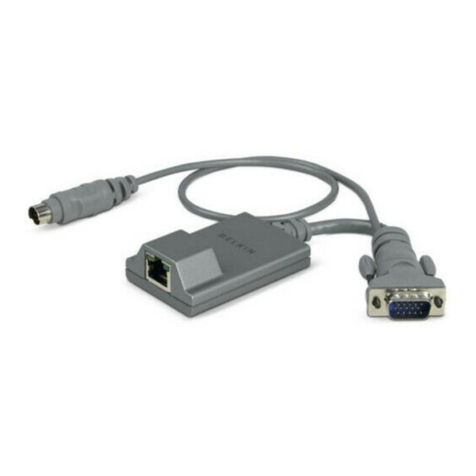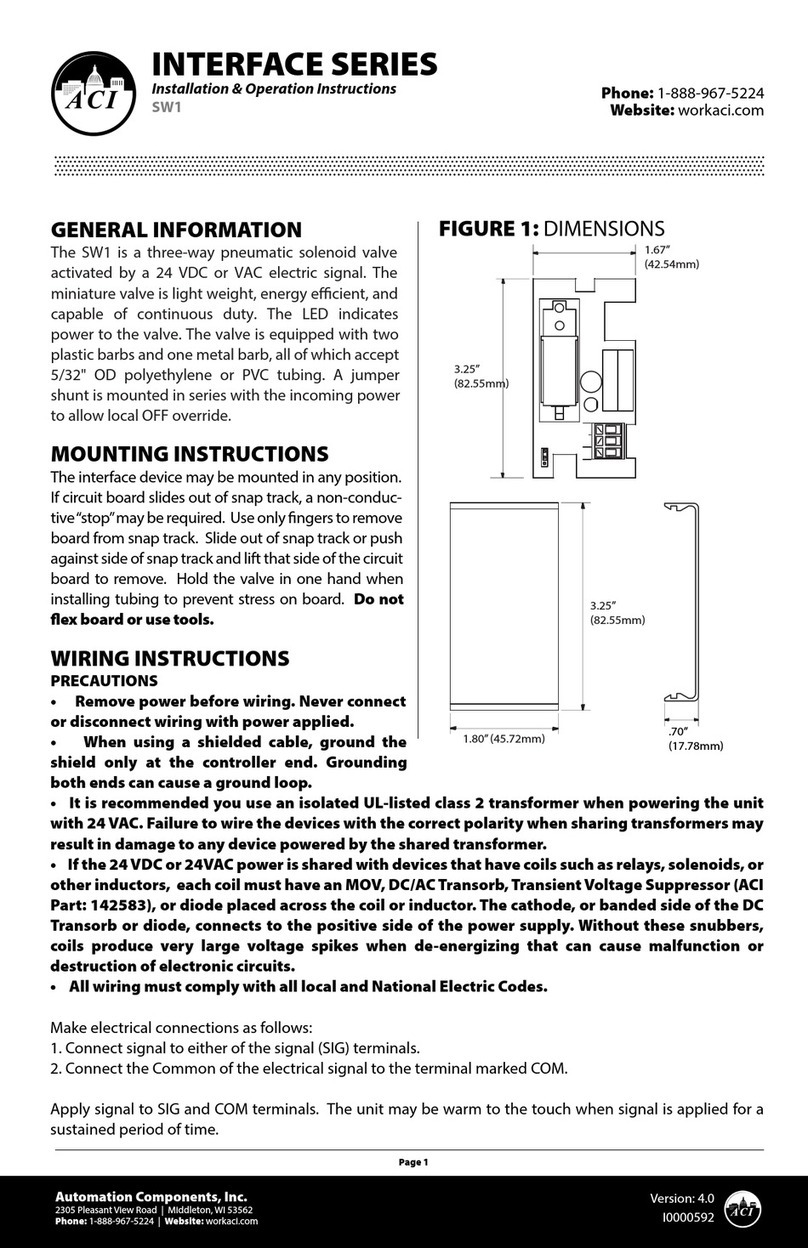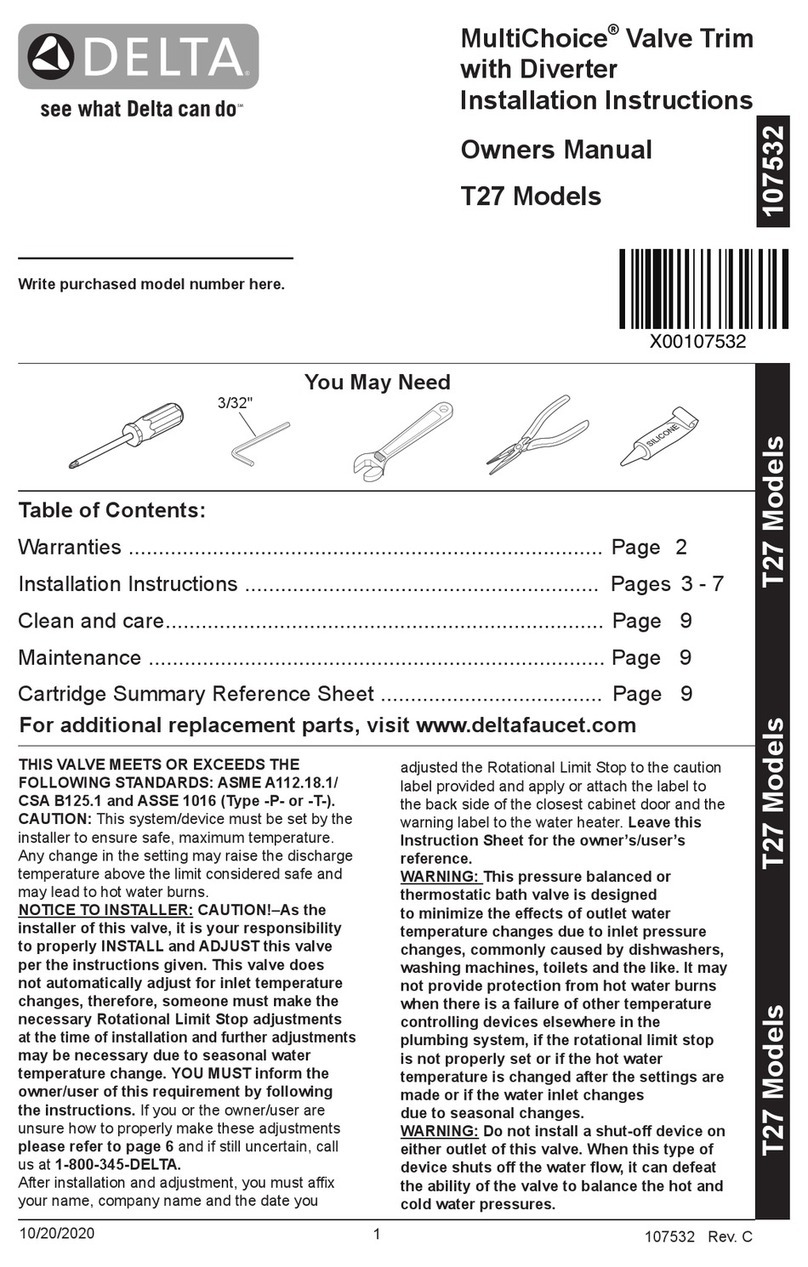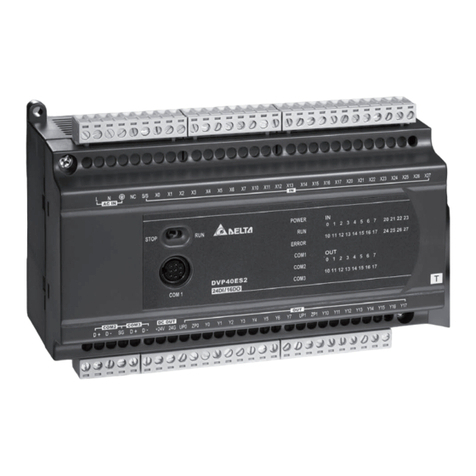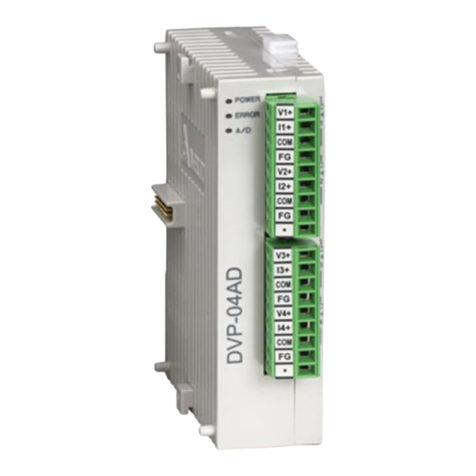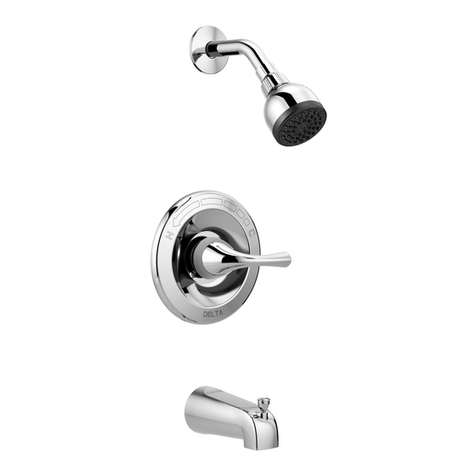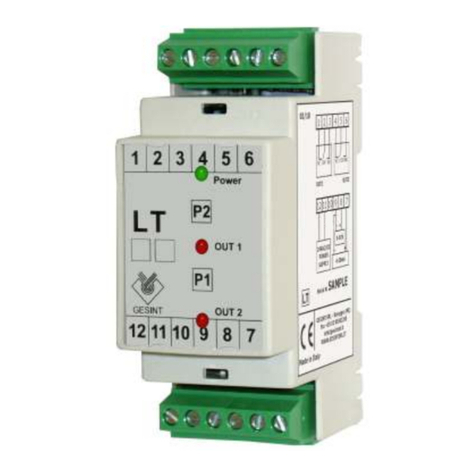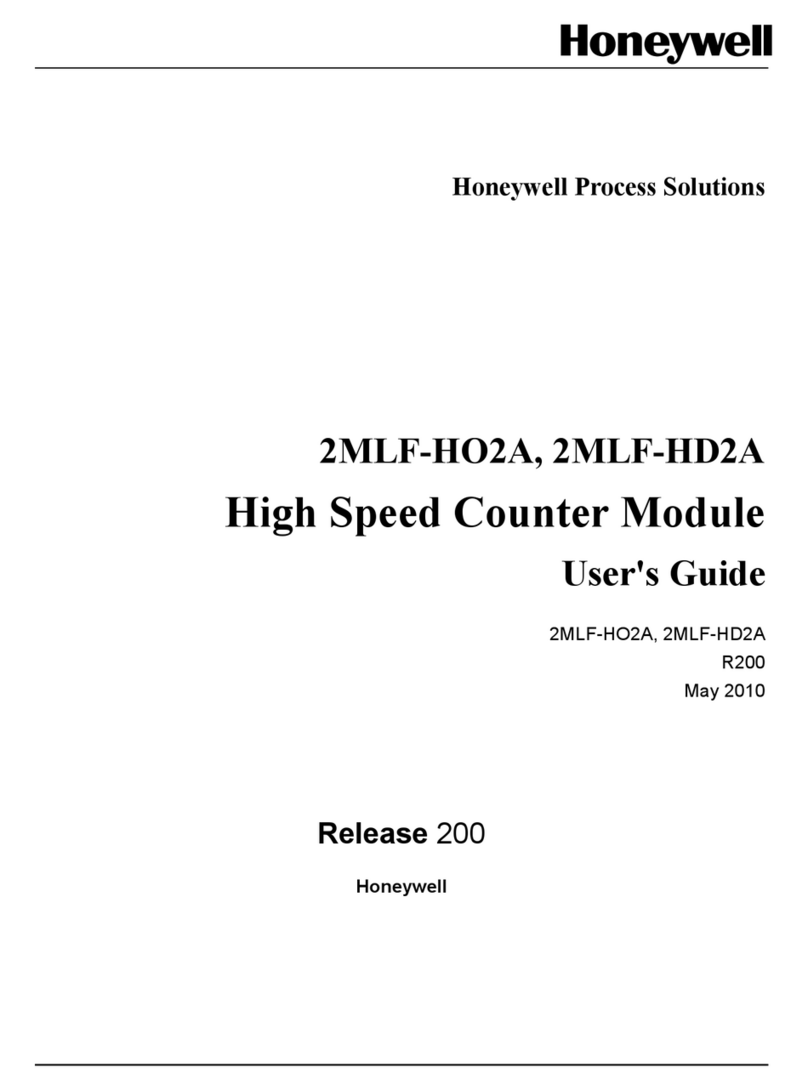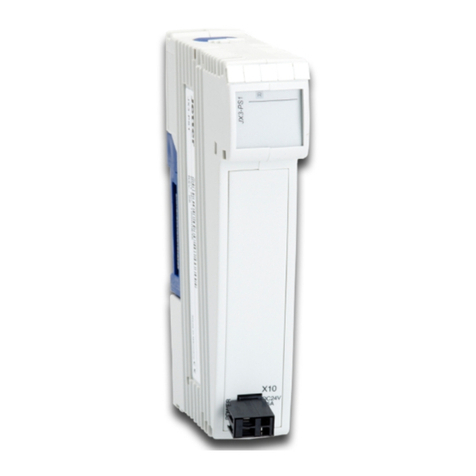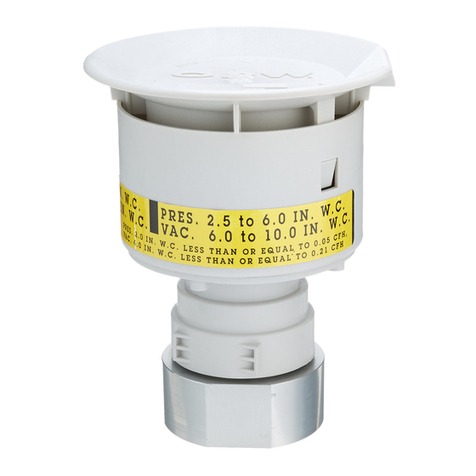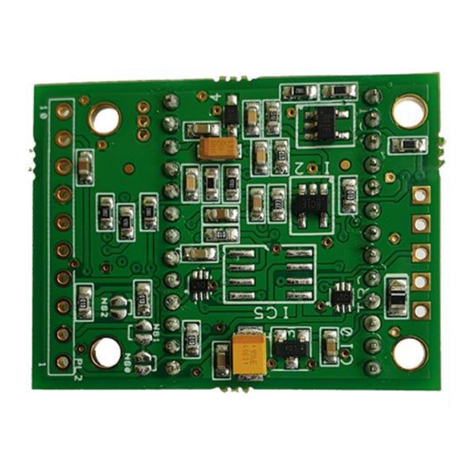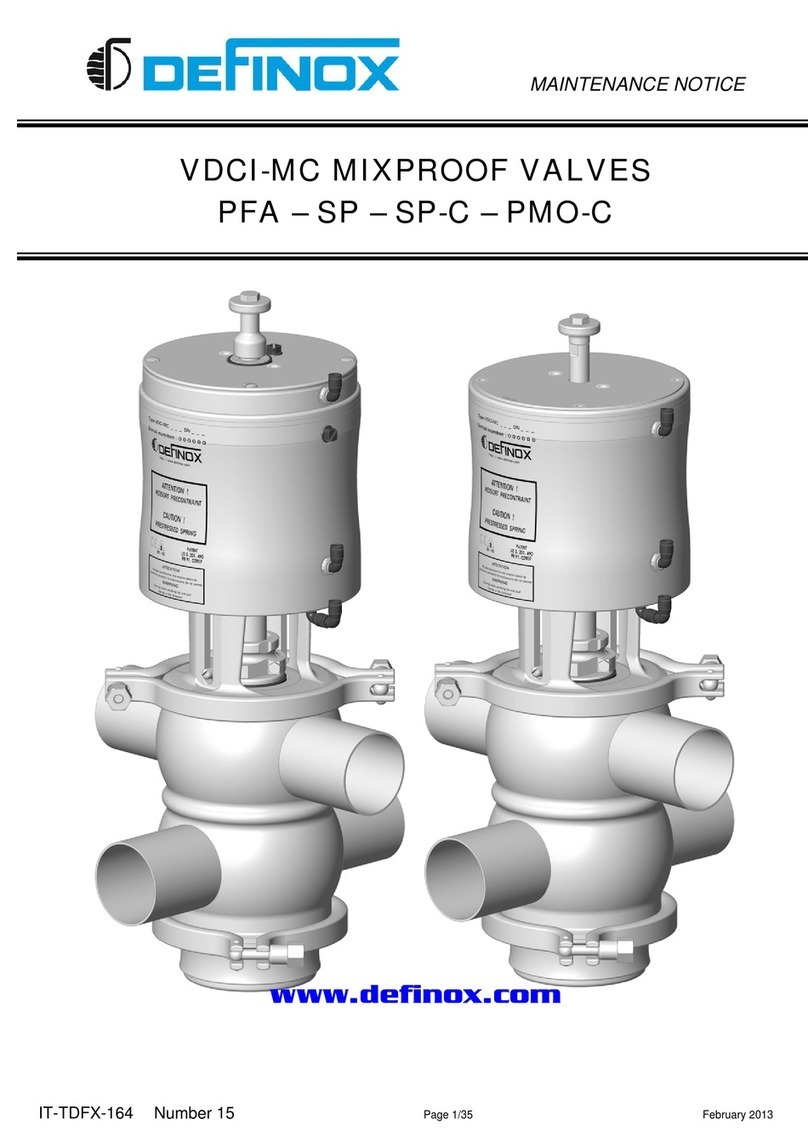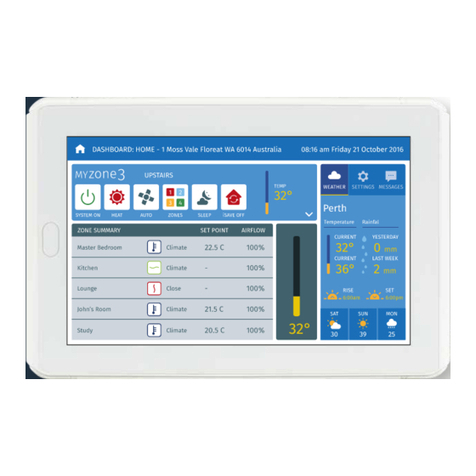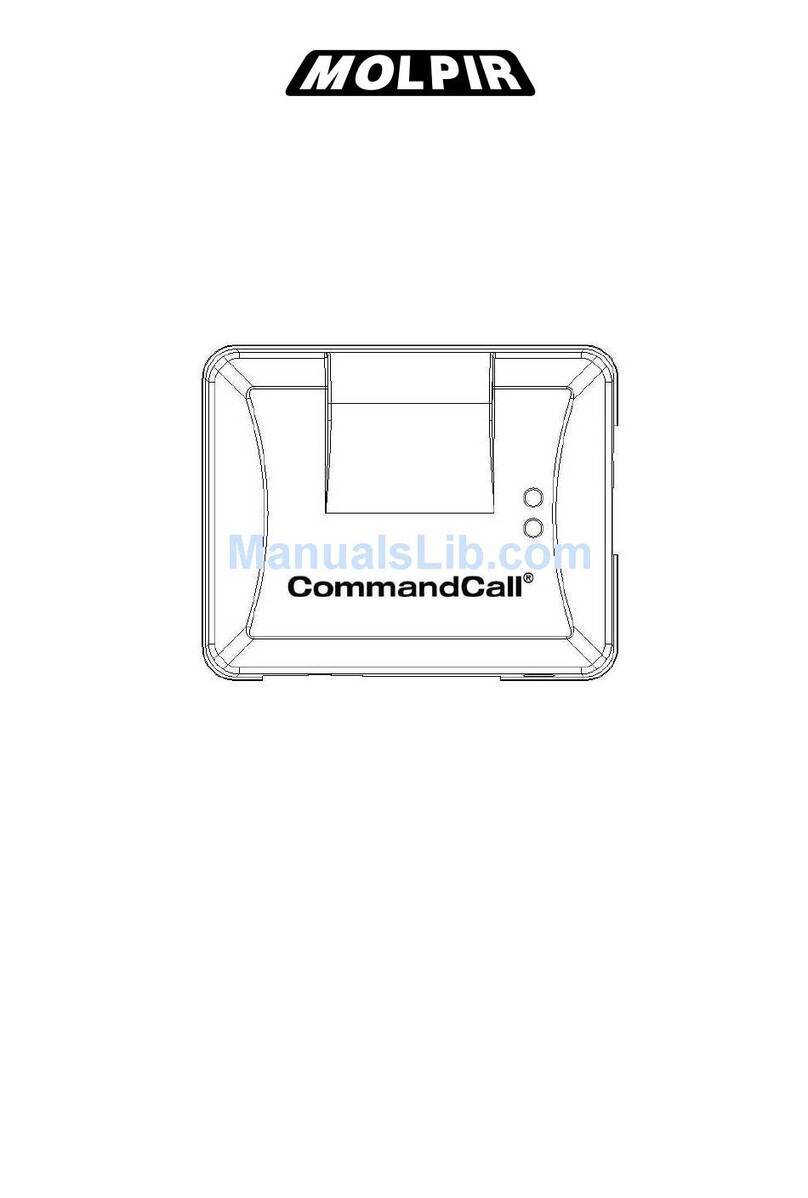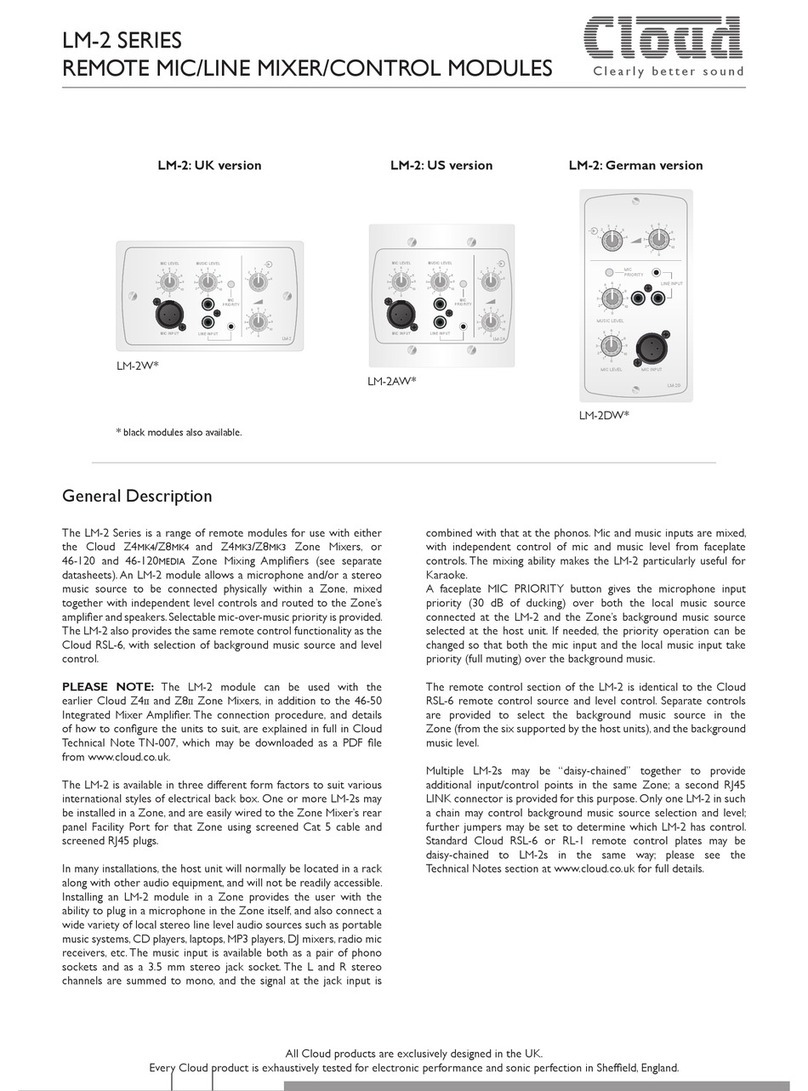0
10
20
30
40
50
60
70
80
90
100
110
-20 -15 -10 -5 0 5 10 15 20 25 30 35 40 45 50 55 60 65
Percentage of M ax Load (%)
Surrounding Air Temperature
(oC)
Eingang (DC)
Nenn-Eingangsspannung 24Vdc
Spannungsbereich 24-28Vdc
Maximale Eingangsspannung 30 ± 0,5Vdc
Eingangsstrom Lademodus: 2,0 ± 1,0A (25°C)
Entlademodus: Max. 40A
Maximale Einschaltstrom (Kaltstart) < 45A (25°C)
Ladedauer < 3hr ± 1hr (25°C)
Wirkungsgrad > 70,0%
Ausgang (DC)
Ausgangsnennspannung 24Vdc typ. (abhängig vom Vin-Wert)
Entladespannung 23-28Vdc
Maximale Ausgangsspannung 30 ± 0,5Vdc
Ausgangsstrom Max. 40A
Nennwertabweichung bei Temp. Leistungsherabsetzung gemäß Abb. 7
Komponenten-Leistungsabfall Vin = 28,0Vdc, max. Laststrom
Kurzschluss / Überlast Kein Schaden
Empfohlene Akkus
Akkutypen 24V, VRLA
2 x 12V, VRLA
Akkukapazität 7,2-15,0Ah
Akkusicherung Kfz-Sicherung, 50A / 80V (z. B. Littelfuse FK3) im Akkuweg.
Die Akkusicherung schützt die Leiter zwischen dem Akku und der
Gleichstromversorgung.
Allgemeine Werte
Gehäusetyp Aluminium
LED-Signale Grüne LED leuchtet = Einheit ist vollständig aufgeladen
Grüne LED blinkt = Einheit wird aufgeladen
Orangefarbene LED blinkt = Einheit wird entladen
Rote LED leuchtet = Akkufehler (kein Akku angeschlossen)
Orangefarbene LED leuchtet = Verpolung bei 24-V-Akku oder
24-V-Gleichstromquelle
Signalrelaiskontakte DC OK = Kontakt ist geschlossen, wenn der Akku vollständig
aufgeladen und das Gerät zum Entladen/Puffern bereit ist.
DISCHARGING = Kontakt ist geschlossen, wenn das Gerät
entladen wird bzw. puffert mit Ausgangsstrom 3-40A.
BATTERY FAIL = Kontakt ist geschlossen, wenn der Akku nicht
funktionsfähig ist.
MTBF > 500.000 Stunden
Abmessungen (B x H x T) 121mm x 50mm x 117,3mm
Gewicht 0,39kg
Anschlussart Schraubverbindung
Abisolierlänge E/A-Klemmenleistenstecker: 10mm
Signal-Klemmenleistenstecker: 7mm
Betriebstemperatur (Umgebungs-Lufttemperatur) -20°C bis +60°C (Leistungsherabsetzung gemäß Abb. 7)
Lagerungstemperatur -25°C bis +85°C
Feuchte bei +25°C, keine Kondensation < 95% RF nichtkondensierend gem. IEC 68-2-2, 68-2-2, 68-2-3,
Schutz vor Feuchtigkeit & Kondensation
Vibration (außer Betrieb) 10 Hz bis 500 Hz bei 30m/S² (3G Spitze); Verschiebung von
0,35 mm; 60 min. pro Achse in alle Richtungen (X, Y, Z).
Siehe IEC60068-2-6. Hinweis: Alle genannten Zahlen sind
Amplituden (Spitzenwerte)
Stoßfestigkeit (in alle Richtungen) 30G (300m/S²) in alle Richtungen entsprechend IEC60068-2-27
Verschmutzungsgrad 2
Höhe (Betrieb) 3000 Meter
Zertizierung und Standards
Elektrische Ausrüstung von Maschinen IEC60204-1
Elektronische Geräte zur Verwendung
in elektrischen Anlagen
EN50178 / IEC62103
Sicherheitseingang Niederspannung PELV (EN60204), SELV (EN60950)
Elektrische Sicherheit (von Informations
technologieausrüstung)
SIQ nach EN60950-1, UL/C-UL anerkannt nach UL60950-1
und CSA C22.2 Nr.60950-1, CB Prüfprotokoll und -bericht nach
IEC60950-1
Industrielle Steuerungsgeräte UL/C-UL gelistet nach UL508 und CSA C22.2 Nr.107.1-01
Schutz gegen Stromschlag DIN57100-410
EC In Übereinstimmung mit EMC-Richtline und
Niederspannungsrichtlinie
Komponenten-Netzteil zur allgemeinen Verwendung EN61204-3
ITE EN55022, EN61000-3-3, EN55024
Industriell EN55011
Begrenzung des Netz-Sinusstroms EN61000-3-2
Sicherheit und Schutz
Isolationsspannung:
Eingang und Ausgang / PE
Signale / PE
Eingang und Ausgang / Signale
1,0KVac
1,0KVac
1,0KVac
Polaritätsschutz Ja
Schutzgrad IP20
Sicherheitsklasse Klasse III
DEUTSCH
Anleitung
ENGLISH
Installation notes
ENGLISH
Technical data
DEUTSCH
Technische Daten
WICHTIGE SICHERHEITSHINWEISE
• BewahrenSiedieseAnleitungaufoderbesuchenSiewww.deltapsu.com/manuals.Diese
Anleitung enthält wichtige Sicherheitshinweise.
• VerwendenSiebeimAustauschderAkkus nurExemplaredesimAbschnitt„Empfohlene
Akkus“ angegebenen Typs.
• Stellen Sie eine ordnungsgemäße Entsorgung derAkkus sicher. Beachten Sie bei der
Entsorgung die einschlägigen örtlichen Vorschriften.
1. Sicherheitsvorschriften
• SchaltenSiedieNetzspannungab,bevorSiedasGerätandasNetzanschließenoderes
vom Netz trennen. Explosionsgefahr!
• WenndieorangefarbeneLED leuchtet, liegt ein Installationsfehler vor. Schalten Sie die
Stromversorgung in diesem Fall nicht ein, solange der Akku angeschlossen ist. Es besteht
Explosionsgefahr!
• Um eine ausreichende Konvektionskühlung zu gewährleisten, halten Sie ober und
unterhalb des Gerätes einen Abstand von 50mm ein.
Bei vertikaler Montage sollte ein seitlicher Abstand von 20mm zu anderen Geräten
gewährleistet sein, bei horizontaler Montage ein Abstand von 50mm.
• BeachtenSie,dassdasGehäusedesGerätessehrheißwerdenkann,abhängigvonder
Umgebungstemperatur und der Belastung des Gerätes.
Verbrennungsgefahr!
• VerbindenundtrennenSiedieAnschlüssenur,wenndieSpannungabgeschaltetist!
• FührenSiekeineObjekteindasGerätein!
• NachdemdasGerätvonallenSpannungsquellengetrenntwurdeliegtübereinenZeitraum
von mindestens 5 Minuten noch gefährliche Spannung an dem Gerät an.
• DasGerätistfürdenInnenbereichvorgesehenundmussineinemGehäusebzw.Kasten
an einem Kondenswasser freien Ort, ohne leitende Verunreinigungen installiert werden.
• VORSICHT:
„ZumEinsatznurimInnenbereich“.
2. Gerätebeschreibung (Abb. 1)
(1) E/A-Klemmenleistenstecker
(2) Signal-Klemmenleistenstecker
(3) LED-Anzeigestatus
(4) Universelles Montageschienensystem
3. Montage (Abb. 2)
Das Gerät darf auf einer DIN 35mm-Schiene, gemäß EN 60715, montiert werden. Bei
vertikalem Einbau sollte das Gerät so eingebaut werden, dass der E/A-Klemmenleistenblock
unten ist. Beim horizontalen Einbau sollte das Gerät so eingebaut werden, dass der E/A-
Klemmenleistenblock auf der linken Seite ist.
Jedes Gerät wird installationsfertig geliefert.
Einrasten des Geräts in DIN-Schiene, wie in Abb. 2 dargestellt:
1. Kippen Sie das Gerät leicht nach oben und setzen Sie es auf die DIN-Schiene auf.
2.KippenSiedasGerätjetztwiedernachuntenbiszumAnschlagamunterenTeil
der Schiene.
3. Drücken Sie nun den unteren Teil des Gerätes so fest gegen die Schiene bis das
Gerät auf der Schiene einrastet.
4. Rütteln Sie leicht am Gerät, um zu überprüfen, ob es korrekt eingerastet ist.
4. Demontage (Abb. 3)
Zum Desinstallieren, entfernen, ziehen bzw. schieben Sie die Verriegelung wie in Abb.3
gezeigt. Dann schieben Sie die Einheit in die entgegensetzte Richtung, lösen Sie die
Verriegelung und Ziehen Sie das Gerät von der Schiene.
5. Anschluss
Die Anschlussklemmen erlauben eine schnelle und einfache Verdrahtung des Geräts. Die
Klemmenleiste entspricht der Schutzart IP20, so dass dem Benutzer Sicherheit geboten wird
und er vor dem Risiko eines Stromschlags geschützt ist.
Sie können exible (feindrähtige Leitung) oder feste Kabel mit folgenden Querschnitten
verwenden:
Tabelle 1
Die Leiter zwischen der Gleichstromversorgung und dem Akku dürfen nicht länger als 2 × 2
Meter sein (2 Meter Kabellänge). Für zuverlässige und erschütterungssichere Verbindungen
sollte eine Abisolierlänge von 10mm beim E/A-Klemmenleistenstecker sowie 7mm beim
Signal-Klemmenleistenstecker verwendet werden (siehe Abb. 4 (1)). Bitte sorgen Sie dafür,
dass die Kabel vollständig in die Anschlussklemmen eingeführt werden, siehe Abb. 4 (2).
GemäßEN60950/UL60950sindfürexibleKabelAderendhülsenerforderlich.
Verwenden Sie geeignete Kupferkabel, die für Betriebstemperaturen von mindestens 60°C,
60°C / 75°C für die USA und mindestens 90°C für Kanada ausgelegt sind, um die UL-
Anforderungen erfüllen zu können.
6. Signalschaltbild (Abb. 5)
Kontaktstrom: Imax = 1A
Kontaktspannung: Vmax = 24Vdc/Vac (Sekundärkreis)
Keine Polaritätsanforderung
7. Hinweise für typische Anwendungen (Abb. 6)
1. Bereitstellung einer Ersatzstromversorgung bei Unterbrechung oder Ausfall der
AC-Stromquelle.
2. Kann mit dem Redundanzmodul DRR-40A kombiniert werden.
IMPORTANT SAFETY INSTRUCTIONS
• Retain these instructions or go to www.deltapsu.com/manuals. This manual
contains important safety instructions.
• When replacing batteries, only use the same type of batteries listed under the
“Recommended Batteries” section.
• Proper disposal of batteries is required. Refer to the relevant local codes for
disposal requirements.
1. Safety instructions
• Switchmainpoweroffbeforeconnectingordisconnectingthedevice.Dangerof
explosion!
• IftheorangestatusLEDison,thisindicatesafailureintheinstallation.Inthiscase,
do not turn on power supply while the battery is connected. Danger of explosion!
• Toguaranteesufcientconvectioncooling,pleasekeepadistanceof50mmabove
and below the device as well as a lateral distance of 20mm (for Vertical Mounting or
50mm (for Horizontal Mounting) to other units.
• Pleasenotethattheenclosureofthedevicecanbecomeveryhotdependingonthe
ambient temperature and load of the unit. Risk of burns!
• Themainpowermustbeturnedoffbeforeconnectingordisconnectingwirestothe
terminals!
• Donotintroduceanyobjectsintotheunit!
• Dangerousvoltagepresentforatleast5minutesafterdisconnectingallsourcesof
power.
• Theunitisabuilt-inunitandmustbeinstalledinacabinetorroom(condensation
free environment and indoor location) that is relatively free of conductive
contaminants.
• CAUTION:
“FOR USE IN A CONTROLLED ENVIRONMENT”
2. Device description (Fig. 1)
(1) Input/Output terminal block connector
(2) Signal terminal block connector
(3) LED display status
(4) Universal mounting rail system
3. Mounting (Fig. 2)
The unit can be mounted on 35mm DIN rails in accordance with EN60715. For
Vertical Mounting, the device should be installed with Input/Output terminal block on
the bottom. For Horizontal Mounting, the device should be installed with Input/Output
terminal block on the left side.
Each device is delivered ready to install.
Snap on the DIN rail as shown in Fig. 2:
1. Tilt the unit slightly upwards and put it onto the DIN rail.
2. Push downwards until stopped.
3. Press against the bottom front side for locking.
4. Shake the unit slightly to ensure that it is secured.
4. Dismounting (Fig. 3)
To uninstall, pull or slide down the latch as shown in Fig. 3. Then, slide the unit in the
opposite direction, release the latch and pull out the unit from the rail.
5. Connection
The terminal block connectors allow easy and fast wiring. The terminal block is IP20
compliant thus provides the user safety and protection from electrical shock hazards.
Youcanuseexible(strandedwire)orsolidcableswiththefollowingcrosssections:
Table 1
The wires between the DC-UPS and battery must not be longer than 2 x 2m
(cord length 2m). For reliable and shock proof connections, the wire stripping length
should be 10mm for Input/Output terminal block connector, and 7mm for Signal
terminal block connector (see Fig. 4 (1)). Please ensure that wires are fully inserted
into the connecting terminals as shown in Fig. 4 (2).
InaccordancetoEN60950/UL60950,exiblecablesrequireferrules.
Use appropriate copper cables designed to sustain operating temperature of:
1. 60°C, 60°C / 75°C for USA
2. At least 90°C for Canada.
6. Signals Wiring Diagram (Fig. 5)
Contact current: Imax = 1A
Contact voltage: Vmax = 24Vdc/Vac (Secondary circuit)
No polarity requirement
7. Typical Application Notes (Fig. 6)
1. Provide backup power during AC source interruption or failure.
2. Can be combined with redundancy module (DRR-40A).
Typical Application Notes
6.1 Provide backup power during AC source interruption or failure
6.2 Can be combined with redundancy module (DRR-40A)
Risk of electrical shock, re, personal injury or death.
(1) Turn power off before working on the device.
(2) Make sure of the wiring is correct by following all
local and national codes.
(3) Do not modify or repair the unit.
(4) Use caution to prevent any foreign objects from
entering into the housing.
(5) Do not use in wet locations.
(6) Do not use the unit in area where moisture or
condensation can be expected
Achtung! Stromschlag-, Feuer-, Verletzungs- oder Todes-
gefahr.
(1) Schalten Sie die Stromzufuhr ab, bevor Sie an dem
Gerät arbeiten.
(2) Stellen Sie sicher, dass die Verkabelung allen ört
lichen und nationalen Richtlinien entspricht.
(3) Nehmen Sie an dem Gerät keinerlei Änderungen
oder Reparaturen vor.
(4) Stellen Sie sicher, dass keine Fremdkörper in das
Gehäuse eindringen können.
(5) Verwenden Sie das Gerät nicht in nasser Umgebung.
(6) Verwenden Sie das Gerät nicht an Orten, wo mit
Feuchtigkeit oder Kondensation zu rechnen ist.
Input (DC)
Nominal input voltage 24Vdc
Voltage range 24-28Vdc
Maximum input voltage 30 ± 0.5Vdc
Input Current Charging Mode: 2.0 ± 1.0A (25°C)
Discharging Mode: 40A Max
Maximum inrush current (cold start) < 45A (25°C)
Charging time < 3hr ± 1hr (25°C)
Efciency > 70.0%
Output (DC)
Nominal outp t voltage 24Vdc typ. (depends on Vin)
Discharging voltage 23-28Vdc
Maximum output voltage 30 ± 0.5Vdc
Output current 40AMax
Derating Refer to Fig. 7
Component derating Vin = 28.0Vdc, Max load
Short circuit / Overload No damage
Recommended Batteries
Battery types 24V, VRLA
2 x 12V, VRLA
Battery capacity 7.2-15.0Ah
Battery fuse Auto 50A / 80V, FK3 (Littelfuse) or similar in the battery path.
The battery fuse protects the wires between the battery and
the DC-UPS.
General Data
Type of housing Aluminium
LED signals Green LED On = Unit is fully charged
Green LED Flashing = Unit is charging
Orange LED Flashing = Unit is discharging
Red LED On = Battery fail (no battery is connected)
Orange LED On = Battery 24V or DC 24V reverse polarity
Signal relay contacts DC OK = Contact is closed when battery is fully charged and the
unit is ready to discharge/buffer.
DISCHARGING = Contact is closed when the unit is discharging/
buffering with output current of 3-40A.
BATTERY FAIL = Contact is closed when the battery fails to
function.
MTBF > 500,000 Hours
Dimensions (L x W x H) 121mm x 50mm x 117.3mm
Weight 0.39kg
Connection method Screw Connection
Wire stripping length Input/Output terminal block connector: 10mm
Signal terminal block connector: 7mm
Operating temperature (surrounding air temperature) -20°C to +60°C (Refer to Fig. 7)
Storage temperature -25°C to +85°C
Humidity at +25°C, no condensation < 95% RH non-condensing per IEC 68-2-2, 68-2-2, 68-2-3,
protection from moisture & condensation
Vibration (non-operating) 10Hz to 500Hz @ 30m/S² (3G peak); displacement of 0.35mm;
60 min per axis for all X, Y, Z direction.
RefertoIEC60068-2-6.Note:allguresquotedareamplitudes
(peak values)
Shock (in all directions) 30G (300m/S²) in all directions according to IEC60068-2-27
Pollution degree 2
Altitude (operating) 3000 Meters
Certication and Standards
Electrical equipments of machines IEC60204-1
Electronic equipment for use in electrical power
installations
EN50178 / IEC62103
Safety entry low voltage PELV (EN60204), SELV (EN60950)
Electrical safety (of information technology
equipment)
SIQ to EN60950-1, UL/C-UL recognized to UL60950-1 and CSA
C22.2No.60950-1,CBtestcerticateandreporttoIEC60950-1
Industrial control equipment UL/C-UL listed to UL508 and CSA C22.2 No.107.1-01,
CSA to CSA C22.2 No.107.1-01 (File No.181564)
Protection against electric shock DIN57100-410
CE In conformance with EMC directive and low voltage directive
Component Power Supply for general use EN61204-3
ITE EN55022, EN61000-3-3, EN55024
Industrial EN55011
Limitation of mains harmonic currents EN61000-3-2
Safety and Protection
Isolation voltage:
Input & Output / PE
Signal / PE
Input & Output / Signal
1.0KVac
1.0KVac
1.0KVac
Polarity protection Yes
Protection degree IP20
Safety class Class III
Refer to
Fig. 1:
Stranded / Solid Torque
Remarks
(mm²) (AWG) (Kgf-cm) (lb in)
(1) 3.3-13.3 12-6 15.5 13.5 Load: 0-20A
(1) 8.4-13.3 8-6 15.5 13.5 Load: 20-40A
(2) 0.2-3.3 24-12 6.2 5.4 –
Siehe
Abb. 1:
Flexibel / Starr Anzugsmoment
Bemerkungen
(mm²) (AWG) (Kgf-cm) (lb in)
(1) 3,3-13,3 12-6 15,5 13,5 Last: 0-20A
(1) 8,4-13,3 8-6 15,5 13,5 Last: 20-40A
(2) 0,2-3,3 24-12 6,2 5,4 –
Figure 1
Figure 2
Figure 4
Figure 6
Figure 3



